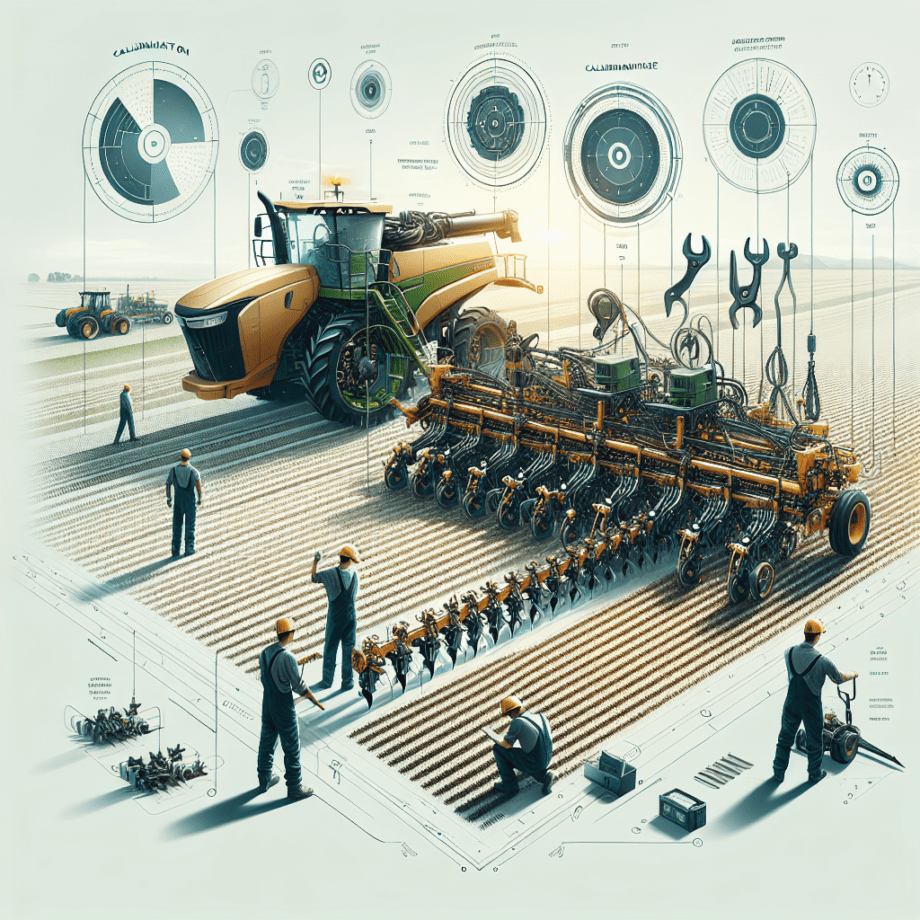Calibration and maintenance of planting machinery are crucial for ensuring optimal performance and longevity of the equipment. Properly calibrated and well-maintained machinery can significantly enhance planting efficiency, reduce downtime, and improve crop yields. This article delves into essential tips for calibrating and maintaining planting machinery, providing valuable insights for farmers and agricultural professionals.
Calibration of Planting Machinery
Calibration is the process of adjusting the machinery to ensure it operates at the desired settings and delivers the correct amount of seeds or plants per unit area. Proper calibration is essential for achieving uniform planting, which is critical for crop health and yield. Here are some key steps and tips for effective calibration:
Understanding the Importance of Calibration
Calibration ensures that the planting machinery distributes seeds or plants evenly across the field. Uneven distribution can lead to gaps or overcrowding, both of which can negatively impact crop growth and yield. Regular calibration helps in maintaining consistency and accuracy, which are vital for achieving optimal planting results.
Steps for Calibrating Planting Machinery
- Read the Manufacturer’s Manual: Before starting the calibration process, thoroughly read the manufacturer’s manual. It provides specific instructions and guidelines for calibrating the machinery.
- Check the Seed Metering System: Inspect the seed metering system to ensure it is clean and free from obstructions. Any debris or buildup can affect the accuracy of seed distribution.
- Set the Desired Planting Rate: Adjust the planting rate according to the crop requirements. This involves setting the correct seed spacing and depth.
- Conduct a Test Run: Perform a test run on a small section of the field to check the accuracy of the settings. Measure the seed distribution and make necessary adjustments.
- Recalibrate as Needed: Regularly recalibrate the machinery, especially when changing seed types or planting conditions. This ensures consistent performance throughout the planting season.
Maintenance of Planting Machinery
Regular maintenance is essential for keeping planting machinery in optimal condition. Proper maintenance not only extends the lifespan of the equipment but also ensures reliable performance during the planting season. Here are some maintenance tips to keep your planting machinery in top shape:
Routine Inspections
Conduct routine inspections of the planting machinery to identify any signs of wear and tear. Look for damaged or worn-out parts, loose bolts, and other potential issues. Addressing these problems early can prevent more significant issues down the line.
Cleaning and Lubrication
Keeping the machinery clean is crucial for its proper functioning. Remove any dirt, debris, and plant residue from the equipment after each use. Additionally, lubricate moving parts regularly to reduce friction and prevent wear. Use the recommended lubricants specified in the manufacturer’s manual.
Checking and Replacing Parts
Regularly check critical components such as seed meters, discs, and blades for signs of wear. Replace any damaged or worn-out parts promptly to ensure the machinery operates efficiently. Using high-quality replacement parts can also enhance the performance and durability of the equipment.
Storage and Protection
Proper storage is essential for protecting planting machinery from the elements. Store the equipment in a dry, sheltered location to prevent rust and corrosion. Covering the machinery with a tarp or using a dedicated storage shed can provide additional protection.
Record Keeping
Maintain detailed records of all maintenance activities, including inspections, repairs, and part replacements. Keeping track of maintenance history helps in identifying recurring issues and planning future maintenance schedules. It also ensures that no critical maintenance tasks are overlooked.
Conclusion
Calibration and maintenance are vital aspects of managing planting machinery. By following the tips outlined in this article, farmers and agricultural professionals can ensure their equipment operates at peak performance, leading to improved planting efficiency and higher crop yields. Regular calibration and diligent maintenance not only enhance the reliability of the machinery but also contribute to the overall success of the planting season.
